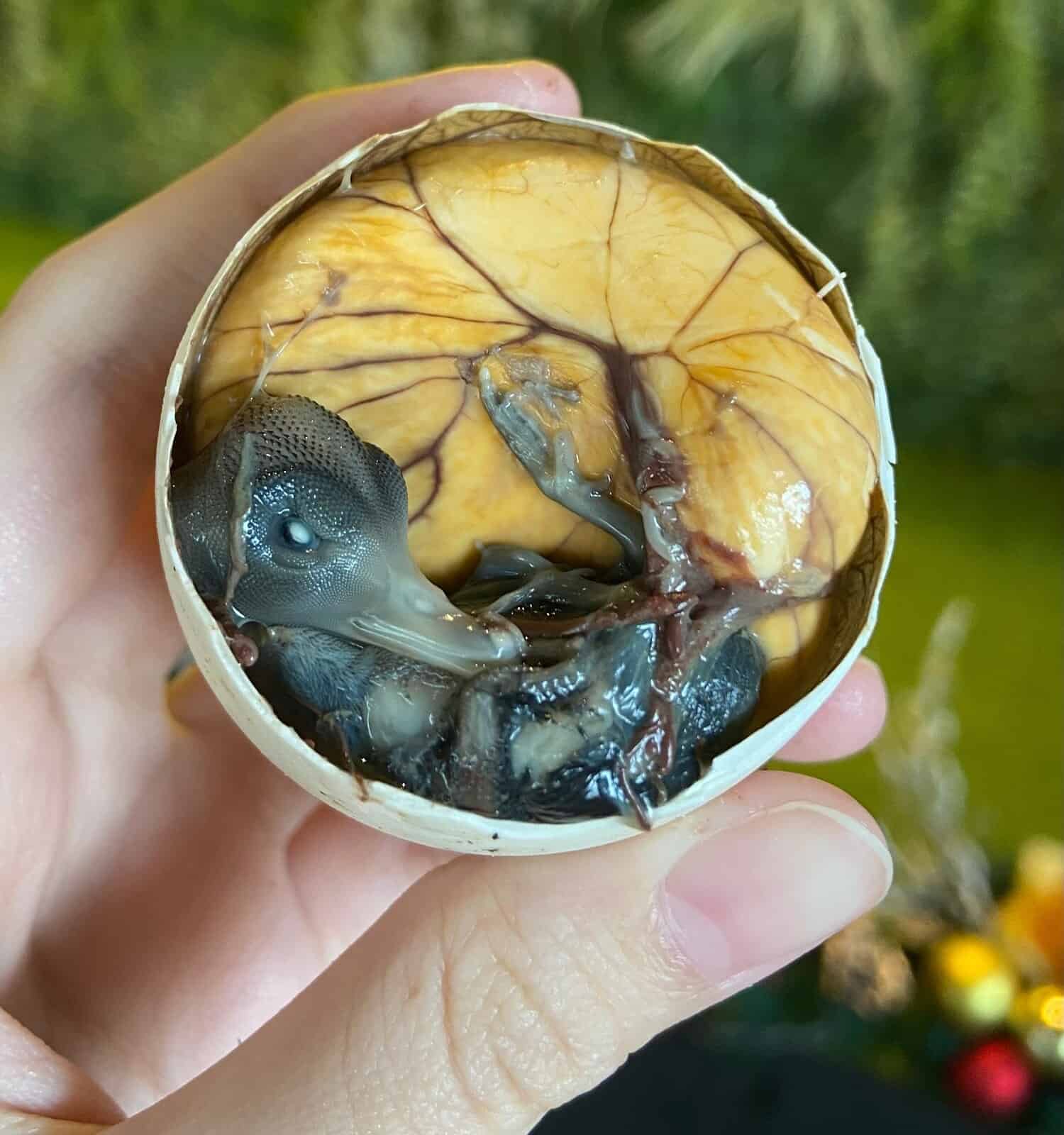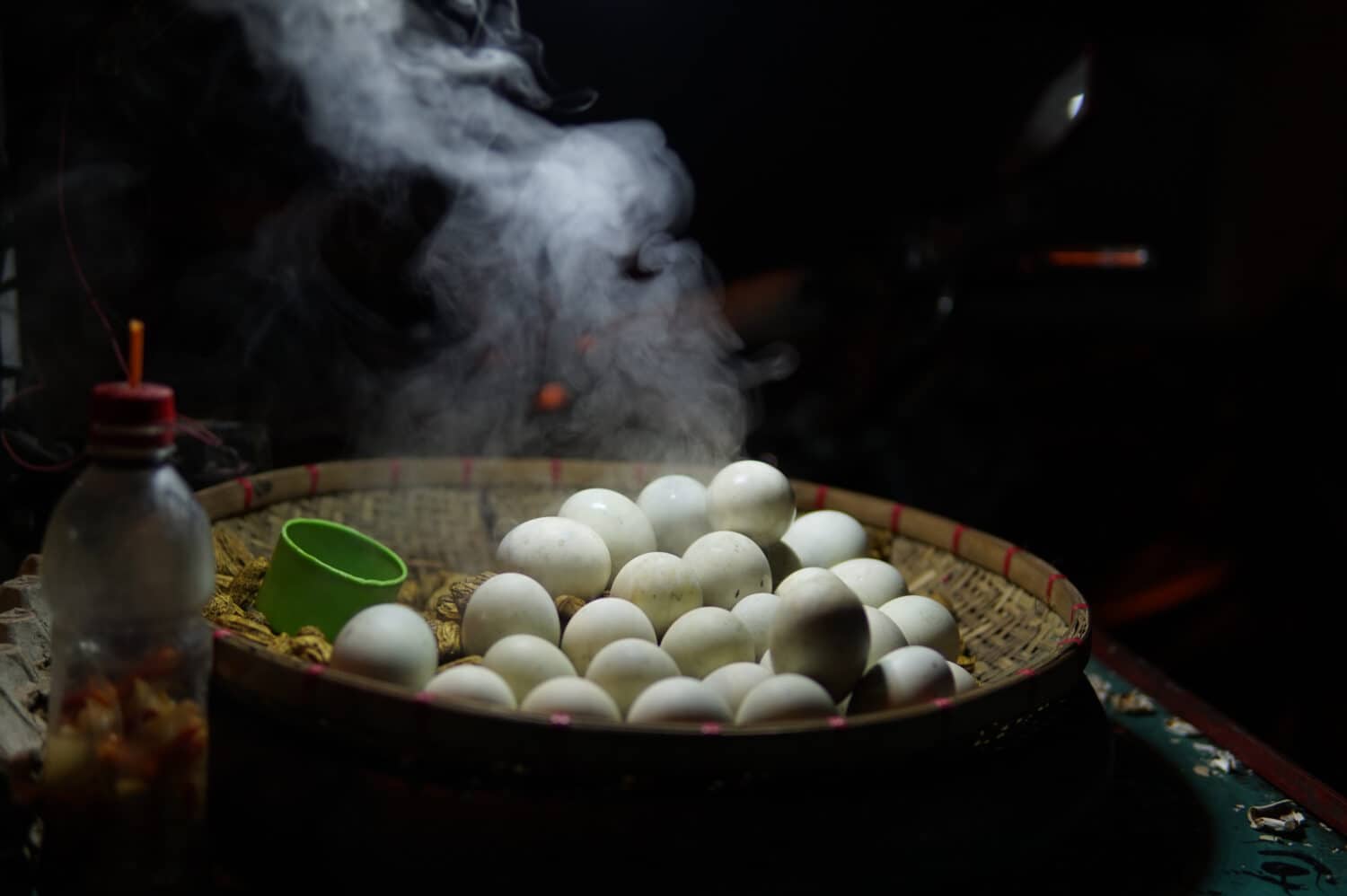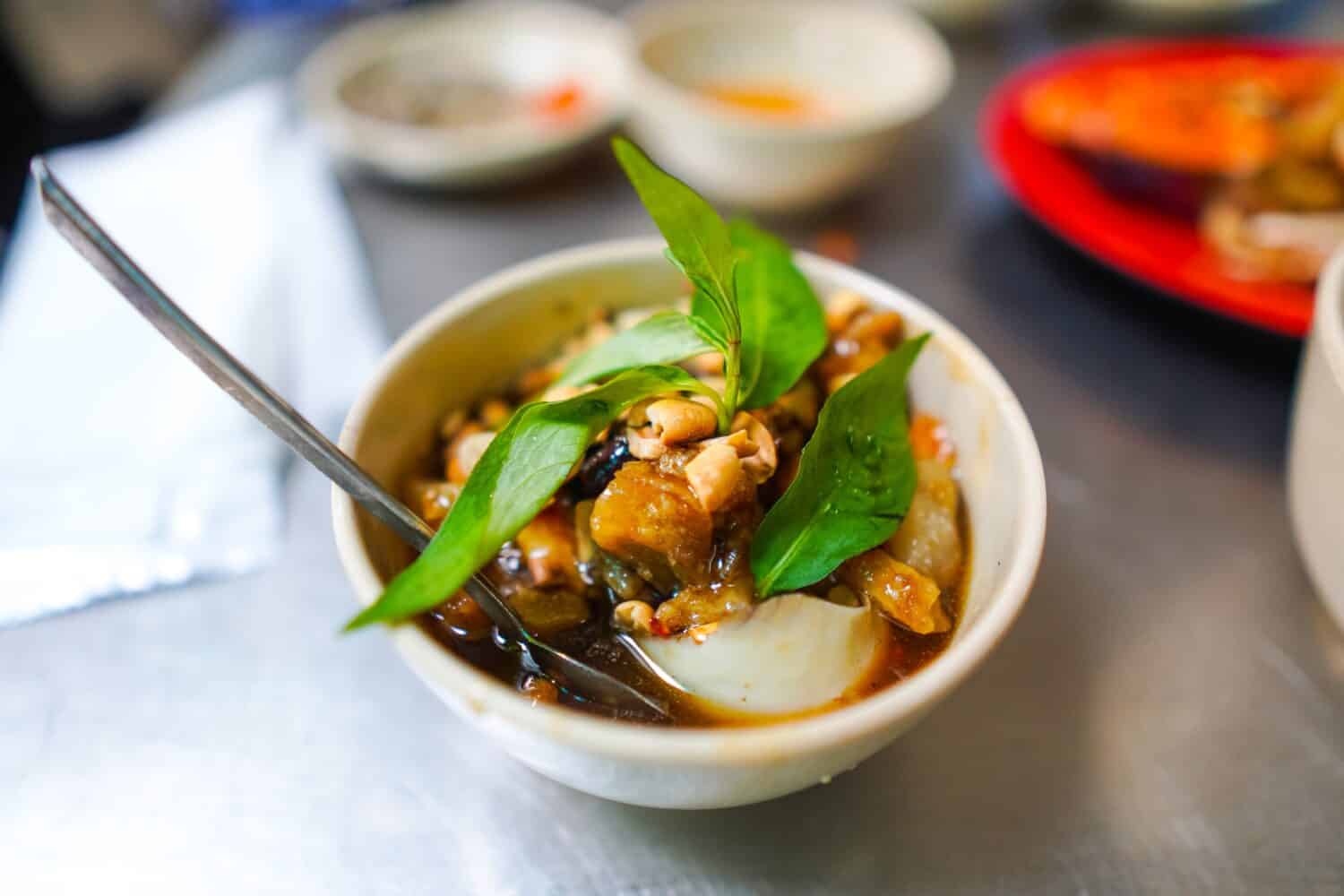There are thousands of different foods and many different cuisines, making it hard to stay on top of all of them. With ever-changing health trends, new and upcoming recipes, and exotic foods, it is impossible to remember it all. There are common food items such as spinach, potatoes, and rice. Then less heard of items like chayote, samphire, and salsify, but all can be found in and around kitchens. There are also food items that are popular in other countries that make their way over to the United States. One such food is balut. This article will uncover what is balut, its history, how to cook it, and more on this unique food.
What is Balut?

Balut is a fertilized bird egg, usually a duck, that is very popular in the Phillippines and throughout Asia.
©Evita Aurelia/Shutterstock.com
If you hear the term balut and have no idea what it is you are not alone. This street food is common in the Philippines, Cambodia, and Vietnam and is loved by many. Balut is a fertilized bird egg, usually a duck, that has been incubated between 14 and 21 days. This Filipino delicacy is the main product of the duck industry in the Philippines. It is also an affordable source of calcium and protein.
The word balut also comes from the Philippines and it means “wrapped”, or covered inside bags during the incubation process. The main difference between different culture’s versions of balut is the incubation period. In the Phillippines, the balut is usually incubated for 17-18 days. In Vietnam it is between 19-21 days and in Cambodia it is between 18-21 days.
History of Balut
While increasingly popular in the Phillippines balut does not solely exist there, rather it exists across Asia. It has been discovered that fertilized duck egg consumption began in China. This occurred in an attempt to preserve the egg’s shelf life before there were refrigerators. It is believed that the Chinese brought the practice of making incubated eggs to the Phillippines during the sixteenth century. At the time, Mallard ducks were abundant in the area where they settled.
This dish went from food storage to a delicacy dish when the supply and demand in the local areas increased. World War II increased the appeal of this dish because balut was a cheap food item that still offered a significant amount of protein. With its gaining popularity, it also gained the term aphrodisiac. While the exact details of how it coined this term are unknown, it is believed that because of its rich source of protein and calcium, it can enhance male and female virility.
Growing Popularity
With the title of aphrodisiac, being affordable and providing nutrients, it is no wonder that this food is so popular among various communities. Asia is also one of the largest users and producers of duck products. In fact, Asia accounts for 82.6% of the total duck meat produced worldwide.
Another fascinating piece of history attached to the balut is the legend that comes from the Philippines. According to legend, there were two towns, one big and one small. The larger one burned the smaller one to the ground, destroying it. After the destruction the people were hungry, but all of the food had been destroyed as well. All that was left were incubating duck eggs that had been roasted by the fire as it burned down the village. The people, having no other options, ate these eggs and found that they were delicious. So the legend of balut began.
Whether or not that legend is true, the popularity of this food item in the Philippines and other countries in Asia cannot be denied. The appeal of balut in Asia has been equated to the appeal of hot dogs in the United States.
How to Cook Balut

The most common ways to cook balut are boiling or steaming them for about 20-30 minutes.
©lito_lakwatsero/Shutterstock.com
To cook balut, traditionally eggs are left out in the sun, stored in baskets, or buried in the sand to reach the desired temperature of warmth. It is imperative to keep the eggs at the right temperature for the right time. If it becomes too hot or too cold the embryo will not develop correctly. About halfway through the incubation process, around nine days, the egg is held up to the light to view the embryo and check on the progress of growth.
Once the embryo is developed and ready to be cooked the most popular ways of cooking are boiling or steaming it. The balut is usually boiled between 20 and 30 minutes, or until it is fully cooked. Once it is fully cooked, it is enjoyed by cracking the wide end of the egg, making a hole, and sprinkling in salt. Afterward, you sip the broth, crack the whole egg open, and enjoy the yolk and the tiny chick inside. In the Philippines, the locals prefer an egg that has been incubated for 17 days. This is because it will not have a beak or feathers. In the U.S., balut is usually sold after 16 days of incubation for the same reason. The lack of the beak and feathers can make the meal less threatening or shocking to those who do not see it as a cultural norm.
Is Balut Legal in the U.S.?
In the U.S. two agencies oversee the distribution and regulation of food products. Those two organizations are the US Food and Drug Administration (FDA) and the US Department of Agriculture (USDA). Their main purpose is to ensure that the food that is approved in America meets their quality standards and is safe for consumption. The majority of the time, if a food item is banned it is because of safety or health-related reasons. However, there are other reasons, such as if an animal is endangered, that it would be deemed illegal to eat them.
While there are foods that are illegal, or largely banned, in the United States, such as puffer fish, sea turtle meat, and haggis, balut does not make the list. Because balut eggs are considered an ethnic food, they are exempt from inspection and grading. In the U.S., balut can often be found uncooked in Asian markets or occasionally cooked in Filipino restaurants.
The image featured at the top of this post is ©Qcon/Shutterstock.com
